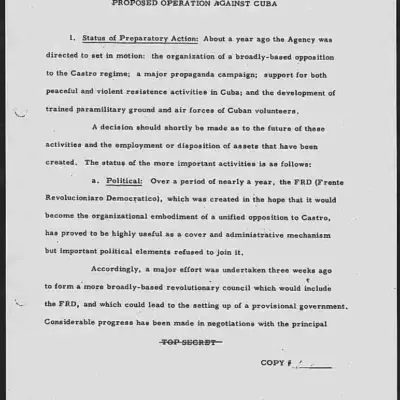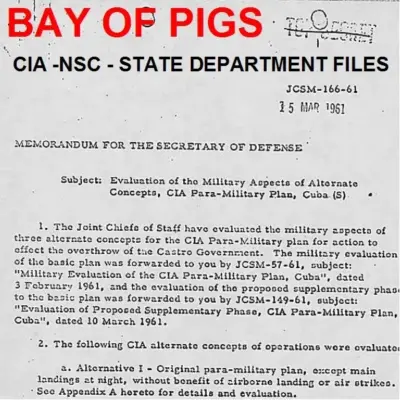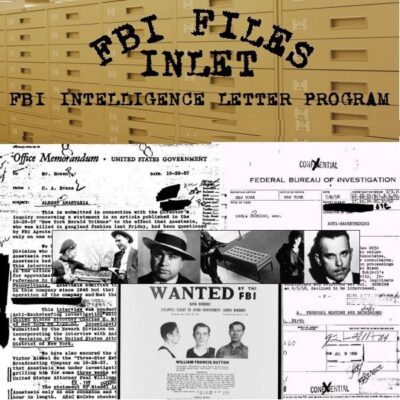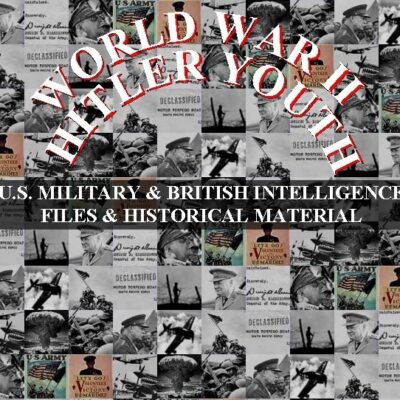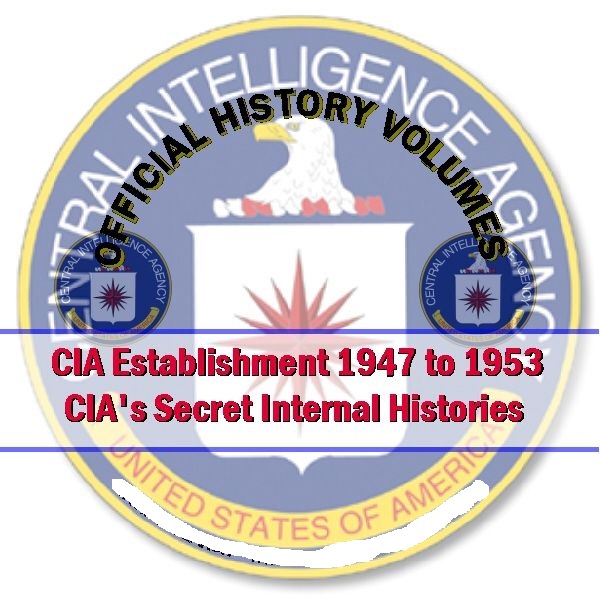
CIA Establishment 1947 to 1953 – CIA’s Secret Internal Histories
$19.50
Description
CIA Origins: Establishment and Key Figures, 1947-1953
Timeline of CIA Establishment (1947-1953)
This timeline is based on the information provided in the description of the two internal CIA histories. Specific dates of events within this period are not detailed in the source, so the timeline focuses on the general progression and key phases.
Pre-CIA (Before 1947):
- World War II Era: The experiences and lessons learned during World War II regarding the need for coordinated intelligence likely played a significant role in the push for a central intelligence agency. General William J. Donovan’s wartime Office of Strategic Services (OSS) is a key precursor, though not explicitly detailed in this source excerpt.
1947: The Genesis of the CIA
- National Security Act of 1947: This landmark legislation authorized the creation of the Central Intelligence Agency (CIA) and the National Security Council (NSC). This act fundamentally reshaped the US intelligence landscape.
1947 – October 1950: Early Years and Challenges
- Establishment of the CIA: Following the passage of the National Security Act, the process of organizing and operationalizing the new CIA began.
- Appointment of the First Directors of Central Intelligence (DCIs): The source mentions three DCIs preceding General Walter Bedell Smith. Rear Admiral Roscoe Hillenkoetter is specifically named as DCI from May 1947 to October 1950.
- Interdepartmental Conflicts: The early years were marked by significant conflict and rivalry between the CIA and the intelligence agencies of other departments, particularly the State Department, the FBI, and the military intelligence services.
- Developing the Theory of Central Intelligence: During this period, the fundamental principles and operational scope of central intelligence as an instrument of government were being developed and debated. Key issues included the balance between individual (DCI) and collective (advisory boards, departmental chiefs) responsibility for intelligence.
- Debate over the CIA’s Role: A central question was whether the CIA should remain a cooperative interdepartmental activity or evolve into a more independent agency directly accountable to Congress and the President.
- Dulles-Jackson-Correa Report (1949): This report heavily criticized the Director of Central Intelligence (then Rear Admiral Roscoe Hillenkoetter) for a major and ongoing failure in intelligence coordination. This report highlights the significant challenges faced by the early CIA.
- Arthur B. Darling’s Perspective: His internal history, written in 1953 but covering the period up to 1950, argues that the State Department, FBI, and military establishment were largely responsible for the difficulties faced by the early CIA and its predecessor, the Central Intelligence Group. He also criticizes the Dulles-Jackson-Correa Report.
October 1950 – February 1953: The Smith Era
- Appointment of General Walter Bedell Smith as DCI (October 1950): This marked a significant turning point in the establishment of the CIA, according to Ludwell L. Montague’s history.
- Smith’s Efforts to Establish the CIA: Montague argues that General Smith played a crucial role in finally establishing the CIA in the intended role envisioned by the President and Congress.
- Restoration of Order and Creation of an Effective Intelligence Community: Montague’s history emphasizes Smith’s success in resolving internal issues and fostering a more unified and effective US Intelligence Community. He views the history of US intelligence as divided into “before Smith” and “after Smith” eras.
Post-Smith (After February 1953):
- Allen Welsh Dulles Becomes DCI: The source mentions that Dulles later became Director of Central Intelligence and restricted access to Arthur Darling’s critical history.
Cast of Characters and Brief Bios
This list includes the principal people mentioned in the source excerpt who were involved in the establishment and early development of the CIA.
- Allen Welsh Dulles: Served in the Office of Strategic Services (OSS) during WWII. Later became a prominent figure in the early CIA and served as Director of Central Intelligence. He chaired the Dulles-Jackson-Correa Report of 1949, which criticized intelligence coordination. Reportedly disagreed with Arthur Darling’s historical assessment of the early CIA.
- Arthur B. Darling: Author of the internal CIA history “The Central Intelligence Agency: An Instrument of Government, to 1950” (1953). His work offers a specific perspective on the early challenges of the CIA, blaming other departments for many of the difficulties.
- General William J. Donovan: Headed the Office of Strategic Services (OSS) during World War II. While not explicitly detailed in the timeline of the CIA’s formal establishment within this excerpt, his wartime intelligence work was a significant precursor to the CIA.
- Dwight D. Eisenhower: Served as a General during World War II and later as President of the United States (after the period covered in detail). His involvement during the establishment period is implied through mentions of high-level governmental discussions.
- James Forrestal: Served as the first Secretary of Defense after the passage of the National Security Act of 1947. Likely involved in the early organizational aspects of the CIA and the broader intelligence community.
- Rear Admiral Roscoe Hillenkoetter: Served as the Director of Central Intelligence from May 1947 to October 1950. His tenure was criticized in the Dulles-Jackson-Correa Report for failures in intelligence coordination, a view defended by Arthur Darling.
- William Harding Jackson: A member of the Dulles-Jackson-Correa Committee (as indicated by the report’s informal name), suggesting his involvement in assessing the early performance of the CIA.
- Sherman Kent: A key figure in the development of national intelligence estimates. His involvement likely pertained to the intellectual and analytical functions of the early CIA.
- General George C. Marshall: A highly influential figure, serving as Secretary of State during the early years of the Cold War. His department’s intelligence activities were a key area of interaction and sometimes conflict with the nascent CIA.
- Ludwell L. Montague: Author of the internal CIA history “General Walter Bedell Smith as Director of Central Intelligence October 1950 – February 1953” (1971). His work presents General Smith as the pivotal figure in establishing the CIA’s intended role and criticizes the performance of the earlier DCIs.
- James Reber: Mentioned in the context of the early CIA establishment, but his specific role is not detailed in this excerpt.
- General Walter Bedell Smith: Served as Director of Central Intelligence from October 1950 to February 1953. Montague’s history portrays him as instrumental in establishing the CIA as an effective intelligence agency.
- Admiral Sidney W. Souers: The first Director of Central Intelligence under the National Security Act of 1947 (though his specific dates of service aren’t given, he preceded Hillenkoetter). Involved in the initial organization of the CIA.
- President Harry S. Truman: The President of the United States during the CIA’s establishment. He signed the National Security Act of 1947 and was ultimately responsible for the agency’s creation and oversight.
- Frank Wisner: A prominent figure in the early CIA, particularly in the Office of Policy Coordination (OPC), which focused on covert operations.
CIA Establishment 1947 to 1953 – CIA’s Secret Internal Histories
This collection is composed of two completed formerly secret internal historical studies concerning the establishment of the CIA, 1947 to 1953, Arthur B. Darling’s “The Central Intelligence Agency: An Instrument of Government, to 1950,”(1953) and “General Walter Bedell Smith as Director of Central Intelligence October 1950 – February 1953” (1971), by Ludwell L. Montague.
The combined 3,329 pages of finished studies cover:
The creation of the Advisory Committee, the establishment of the Department of the Air Force, General Bedell Smith’s career with the Department of the Army, the Boston Scientific Advisory Panel, Sir Winston Churchill, the Psychological Strategy Board, General William J. Donovan, Allen Welsh Dulles, the Eberstadt Committee (a.k.a. Hoover Task Force), General Dwight D. Eisenhower, James Forrestal, the Global Survey Group, Rear Admiral Roscoe Hillenkoetter, the Intelligence Advisory Board (IAB), the Intelligence Advisory Committee (IAC), the Interdepartmental Coordinating and Planning Staff (ICAPS), William Harding Jackson, the Joint Chiefs of Staff (JCS), the Joint Intelligence Committee (JIC), Sherman Kent, General John Magruder, General George C. Marshall, the Board of National Estimates, the National Security Act of 1947, the National Security Council (NSC), the Office of Current Intelligence (OCI), the Office of Intelligence Coordination (OIC), the Office of Intelligence Research (OIR), the Office of National Estimates (ONE), the Office of Operations (OO), the Office of Policy Coordination (OPC), the Office of Research Reports (ORR), the Psychological Strategy Board (PSB), James Reber, Raymond Sontag, Admiral Sidney W. Souers, Admiral Leslie Stevenson, President Harry S. Truman, General Hoyt S. Vandenberg, Frank Wisner, Walter Reid Wolf, Major General Edwin K. Wright, and Major General Willard Wyman.
Both histories give much attention to the conflict between departmental intelligence agencies. Each history gives a distinct point of view of the early years of the establishment of the Central Intelligence Agency.
THE CENTRAL INTELLIGENCE AGENCY: AN INSTRUMENT OF GOVERNMENT, TO 1950 BY ARTHUR B. DARLING
2,259 pages of internal CIA history in ten sections, plus an index, and an abridged summary of the entire study completed in 1953.
In his preface to this work Arthur Darling wrote:
“Two things run through this historical study. The theory of central intelligence has a developed with the growth as an instrument of government. The themes are so interrelated that they are not to be treated separately. When attention is a upon developing theory, the issue is that of individual versus collective responsibility, the rivalry between the Director of Central Intelligence and the chiefs of the Department of services he can’t do that his board of advisors. They were his counselors with respect to many affairs in the central organization and in particular the production of national estimates.
When considered from position of the growing instrument of government, the question is whether the institution should continue as a cooperative interdepartmental activity should become an independent agency, authorized by law as determined by Congress rather than subject to direction as recommended to the President by his secretaries. They were caught between the interest of their Departments and their collective authority over central intelligence organization, first in the National Intelligence Authority and then as the National Security Council.
Thucydides found his task a laborious one. Eyewitnesses of the same occurrences, he said, gave different accounts as they remembered or were interested in the actions of one side or the other. Throughout this study the purpose has been to retain historical perspective, however contemporary the crisis or heated the conflict of interests. The records of the National Security Council were open for this investigation. References in a footnote show the significant documents and interviews which have been gathered in a permanent historical collection for the director of central intelligence.”
In 1988 the History Staff of the Office of the Director of Central Intelligence, Central Intelligence Agency added a note to Darling’s history:
“The reader should be aware that Arthur B. Darling’s history, “The Central Intelligence Agency: An Instrument of Government, to
1950,” has a definite and sometimes controversial point of view. Darling blames the State Department, the FBI, and what he terms the
Military Establishment, especially the heads of the military intelligence services, for much of the hardship which the early CIA (and its predecessor, the Central Intelligence Group) endured. He also heavily criticizes the Dulles-Jackson-Correa Report of 1949, which held the Director of Central Intelligence responsible for a major and ongoing failure in intelligence coordination. Reportedly, Allen Dulles (chairman of the Dulles-Jackson-Correa Report) did not concur with Darling’s conclusions and, when Dulles became Director of Central Intelligence, restricted access to the history.”
GENERAL WALTER BEDELL SMITH AS DIRECTOR OF CENTRAL INTELLIGENCE OCTOBER 1950 – FEBRUARY 1953
Dr. Montague completed this 764-page, five-volume history, which was originally classified Secret, in December 1971 for the History Staff of the Office of the Director of Central Intelligence.
Montague wrote that, “this history will demonstrate, it was General Smith who finally established the Central Intelligence Agency in the role that had been intended for it by the President in 1946 and the Congress in 1947.”
Montague view of Smith’s role in the establishment is made clear. According to Montague, “It took a man of Smith’s prestige, character, and ability to restore order and to create, for the first time, a really effective United States Intelligence Community. Thus, the history of US Intelligence is clearly divisible into two distinct eras, before Smith and after Smith.”
In a forward added to the study in 1990, CIA Chief Historian J. Kenneth McDonald, wrote:
“Like the first CIA history released under this program, Arthur B. Darling’s ‘The Central Intelligence Agency: An Instrument of Government, to 1950,” this history has a distinct point of view . Indeed, Montague’s opening chapters take issue with the Darling history’s generally favorable view of the first three Directors of Central Intelligence, who preceded General Smith. Where Darling found the State Department, FBI and heads of the military intelligence services principally responsible for the hardships that the CIA and its predecessor, the Central Intelligence Group, endured from 1946 to 1950, Montague holds the first Directors of Central Intelligence answerable for these problems and the interdepartmental dissension that produced them…
The interpretive differences between Darling and Montague involve more than their assessments of the contributions of General Smith’s three predecessors. Also, at stake was the reputation of its successor, Allen Dulles, whose 1949 report–known informally as the Dulles-Jackson-Correa Report–had heavily criticized Rear Admiral Roscoe Hillenkoetter, Director of Central Intelligence from May 1947 to October 1950, for a major ongoing failure in intelligence coordination. Darling defended Hillenkoetter’s record against these charges, and Montague tells us that Dulles disapproved of Darling’s history and as Director restricted access to it. (Darling’s work was nevertheless published in CIA’s classified internal journal, Studies in Intelligence, in the late 1960s, and declassified and released to the public in November 1989.)”





